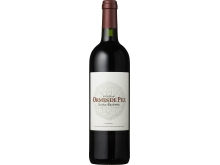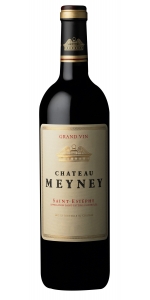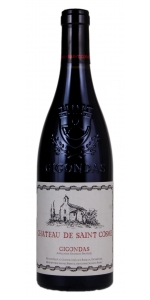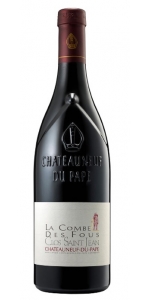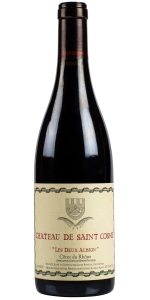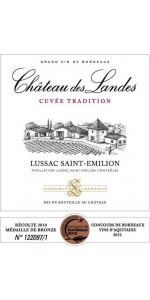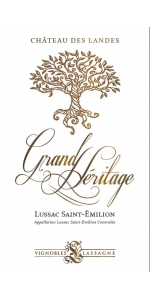Ormes de Pez Saint Estephe 2020
6 bottles with free shipping for: $360.00
12 bottles with free shipping for: $660.00
| BUY MORE! SAVE MORE! | ||||||||||||||||||||
|
| Country: | France |
| Region: | Bordeaux |
| Winery: | Ormes de Pez |
| Grape Type: | Merlot |
| Vintage: | 2020 |
| Bottle Size: | 750 ml |
Ormes de Pez Saint Estephe is made from 54% Merlot, 38% Cabernet Sauvignon, 4% Cabernet Franc and 4% Petit Verdot.
Château Ormes de Pez 2020 displays deep garnet-purple color with notes of plum preserves and dark berries, plus hints of graphite. Nice chewiness to the texture and lovely freshness, finishing on a lingering fragrant-earth note.
Ormes de Pez has been part of the Medoc landscape since the 18th century. At the time of the French Revolution, the current property was called the Domaine de Pez (meaning ''peace'' in the local dialect). As for the elms (''ormes'') that have appeared on the bottle labels since 2003, they grew on the grounds of the domaine until this mythical variety of tree ceased to grow in Europe in the 1950's.
From the 19th century onwards, the château had numerous owners (Southard and Pieck, Berthé, Carrère, Alibert, Meiners and Allemand, Eschenauer, Johnson, Miaihle), before becoming a part of the Cazes family. In around 1880, Marie Cazes married Jean Guillou, the Ormes de Pez Cellar Master. He was sadly killed at the very beginning of the Great War and so Marie, a woman of great character, subsequently took over the business. Her brother Jean-Charles Cazes purchased Ormes de Pez in 1940. Jean-Michel Cazes later redeveloped and modernised the traditional XVIII century buildings in the early 80's.
Château Ormes de Pez lies 60 km from Bordeaux on the Médoc peninsula. It benefits from a mild ocean climate thanks to its proximity to the estuary and the Atlantic ocean. Its 40 hectares of vineyards consist of two very distinct terroirs: the Cabernets thrive on the gravelly parcels composed of quartz and rolled pebbles whereas Merlot is best-suited to the cooler, sandy-clay parcels. These parcels have good drainage properties and are representative of the Saint-Estèphe appellation. Vines are planted in accordance with the traditional Médoc planting ratio. Cabernet Sauvignon counts for 54% of plantings, complemented by 37% Merlot, 7% Cabernet Franc and 2% Petit Verdot.
Meyney Saint Estephe is made from 52% Cabernet Sauvignon, 35% Merlot and 13% Petit Verdot.
The vineyards planted on a perfectly drained siliceous gravel soil provide ideal conditions for the maturity of the grapes and result in a very deep black color wine with spicy notes and a distinguished style.
The 2020 vintage embodies what Bordeaux does best - a great classic vintage, complete, complex, rich and unctuous.
Review:
"Attractive aromas of ripe dark berries with dark spices, walnut, chocolate nibs and bark. Medium- to full-bodied with a dense, velvety texture and plush, fine-grained tannins. Very textural and creamy with a deep core of ripe dark fruit and a succulent finish. Try after 2025."
- James Suckling, 93 pts
Chateau de Saint Cosme Gigondas is made from 70% Grenache, 15% Mourvèdre, 14% Syrah, 1% Cinsaut.
The wine shows intense blackberry and fig fruit with licorice, violets, and charcoal on the finish. It is remarkably fresh and finessed given the sun and warmth of the southern Rhône. The unique micro-climate combined with 60-year-old vines and traditional winemaking make Château de Saint Cosme Gigondas the benchmark wine of the appellation.
Review:
Leading off the Gigondas, the base 2020 Gigondas has lots of black raspberry, ground pepper, and violets notes as well as a round, supple, silky style on the palate. It should be approachable on release, yet it has plenty of mid-palate depth as well as tannins, and I have no doubt it will evolve for 20 years if properly stored.
-Jeb Dunnuck 91-93 Points
Clos Saint-Jean is a 41-hectare estate in Châteauneuf-du-Pape run by brothers Vincent and Pascal Maurel. Considered by many critics and wine-writers as the preeminent estate espousing the modern style of winemaking in Châteauneuf, this cellar is one of the oldest in the region, having been founded in 1900 by the greatgreat-grandfather of Vincent and Pascal, Edmund Tacussel. A short time after its founding and well before the AOP of Chateauneuf-du-Pape was created in 1923, Edmund began bottling estate wines in 1910.
The farming at Clos Saint-Jean is fully sustainable due to the warm and dry climate, which prevents the need for chemical inputs. Instead, Vincent and Pascal employ organic methods for pest control, mainly pheromones, to prevent pests from taking up residence in their vines, a process called amusingly enough in French, confusion sexuelle. The vines tended manually, and harvest is conducted in several passes entirely by hand.
Combe des Fous literally means, the hill of the fool. The hill, in this case, is located in the far southern reach of Le Crau which was left barren for many centuries because the layer of galets was so exceedingly deep that everyone assumed vines could never survive there. The fool in this situation is Edmund Tacussel, the great-great-grandfather of Vincent and Pascal Maruel who planted a Grenache vineyard on this site in 1905. That old-vine Grenache form the heart of this cuvée with a small amount of Syrah, Cinsault and Vaccarèse. La Combe des Fous is only made in the best vintages.
Review:
Pumps out heady raspberry, mulberry and blackberry compote notes that keep form and direction, thanks to a roasted apple wood spine and flanking ganache, garrigue and warm earth notes. Seriously grippy finish. Grenache, Syrah, Cinsault and Vaccarèse.
-Wine Spectator 96 Points
The 2020 Châteauneuf Du Pape La Combe Des Fous is a normal blend of 70% Grenache, 20% Syrah, and the rest Vaccarèse and Cinsault. Beautiful, full-bodied aromas and flavors of ripe black raspberries, violets, ground pepper, lavender, and herbes de Provence all emerge from this gorgeous barrel sample, and it shows the pure, fresh, yet still concentrated style of the vintage brilliantly.
-Jeb Dunnuck 94-97 Points
Chateau de Saint Cosme Cotes du Rhone Les Deux Albions is made from 50% Syrah, 10% Mourvèdre, 20% Grenache, 15% Carignan, 5% Clairette.
Les Deux Albions is one of the outstanding wines of Louis Barruol’s collection and highlights the exceptional value that can still be found in the Côtes-du-Rhône category. The wine combines depth, structure, and finesse with aromas and flavors of roasted game, mesquite, and olive, crushed plum, and black currants.
Syrah, with its deep flavors and firm tannins, is a natural match for grilled or smoked meat and dishes featuring herbs, roasted mushrooms, and onions. Seared venison or beef with black pepper and thyme or a Moroccan tagine of pigeon or chicken are complimented by the spicy characteristic of Syrah.
Ripe and polished yet fresh, this red seduces with ripe, generous anise, vanilla-laced blackberry and cherry flavors, then turns dark and brooding on the palate, with smoldering iron, garrigue, menthol, black pepper and dark earth framed by fine-grained tannins. Syrah, Grenache, Carignan, Mourvèdre and Clairette.
-Wine Spectator 92 Point
Landes Cuvee Tradition Lussac Saint Emilion is made from 80% Merlot, 15% Cabernet Sauvignon and 5% Cabernet Franc
Color: deep ruby intense color.
Aroma: racy and aromatic nose with aromas of ripe red fruit.
Taste: this wine is silky, round and smooth first taste, with aromas of raspberries, and blackcurrant, powerful and complex finish.
Landes Grand Heritage Lussac Saint Emilion is made from 100 percent Merlot.
First vintage of this wine was 2010 to pay tribute to the founding father of Chateau des Landes - Paul Lassagne. He gave the family a great legacy of terroir, passion and know-how to craft this great cuvee produced from a selection of the finest grapes that are vinified and aged in 600 liter French oak foudres, just like it was done in the old days. The resulting wine is complex and aromatic offering bold aromas and flavors of dark berries, floral tones, spice, oak and vanilla. The palate is onctuous and powerful, well structured with ripe tannins. Well balanced and a complex finish.
Average age of the Vines: 60 years Yield : 50 hectoliters / hectare. Grape picking: harvest by machine. Vats: Stainless steel thermoregulated and computerized. Fermentation: 45 to 50 days with a final 35°C warm steeping. Winemaking: Malolactic fermentation in new oak barrel. Ageing: 16 months in new French Oak barrels from Allier and Limousin. Annual production: 10,000 bottles. (833 cases)
- back
Wachau Riesling is dry and often defined by high levels of dry extract (due to a lengthy ripening period) and a pleasing freshness (due to dramatic temperature swings between day and night). Sedimentary soils of sand and stone give Kirchweg Riesling a dense mineral texture and fine fruity flavors.
Review:
I love the deep and delicate, peachy nose of this extremely attractive Wachau dry riesling. Wonderful fresh fruit with a touch of mint and lemon balm on the ripe but rather sleek and very precise palate. The power and concentration show themselves first at the stunningly long and pristine finish.
-James Suckling 96 Points
Alexandre M Mon Chenin Cuvee 23 NV is made from 100% Chenin Blanc.
Mon Chenin means "My Chenin". This is Alexandre Monmousseau's personal view of what the Chenin blanc grape from France is - full of floral and fresh white fruits, a palate of yellow fruits and floral flavors, finishing clean, fresh, and dry.
Serve as Apéritif, seafood, fishes with buttery sauce, Asian cuisine, hard cheeses.

